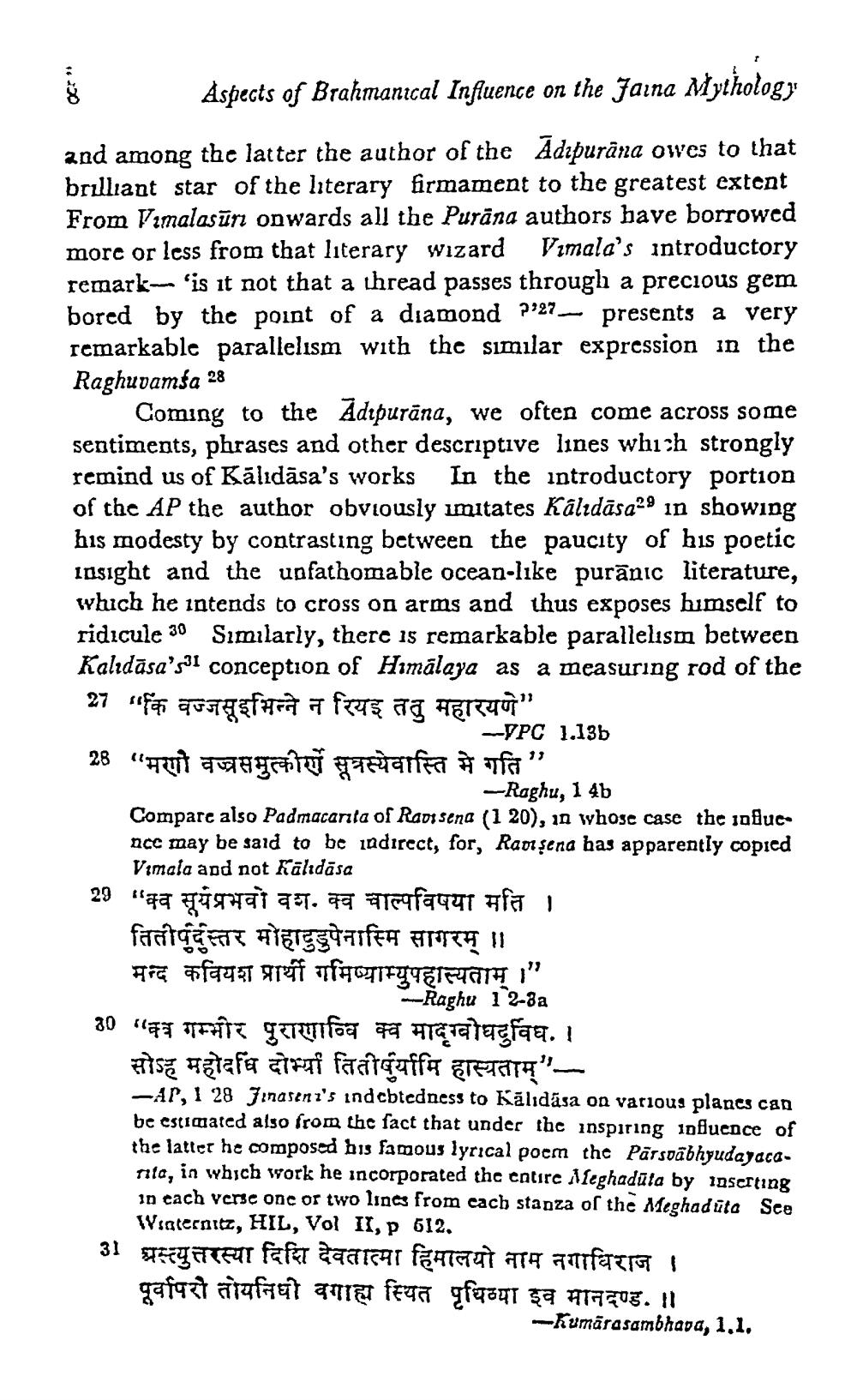________________
OCT"
Aspects of Brahmanical Influence on the Jaina Mythology
and among the latter the author of the Ādrpurâna owes to that brilliant star of the literary firmament to the greatest extent From Vimalasūn onwards all the Purāna authors have borrowed more or less from that literary wizard Vimala's introductory remark- 'is it not that a thread passes through a precious gem bored by the point of a diamond 2:27 presents a very remarkable parallelism with the similar expression in the Raghuvamsa 28
Coming to the Adipurāna, we often come across some sentiments, phrases and other descriptive lines which strongly remind us of Kālıdāsa's works In the introductory portion of the AP the author obviously imitates Kälıdāsa29 in showing his modesty by contrasting between the paucity of his poetic lasight and the unfathomable ocean-like purānic literature, which he intends to cross on arms and thus exposes himself to ridicule 30 Similarly, there is remarkable parallelism between Kalıdāsa's1 conception of Himalaya as a measuring rod of the 27 de apagsfart 7 fee ng HENTETT"
--PC 1.136 28 "HUNT WASTU FET À fa"
-Raghu, 1 4b Compare also Padmacarıla of Radisena (1 20), in whose case the solucncc may be said to be indirect, for, Radi şena has apparently copied
Vimala and not Kaldāsa 29 "qa yiga 97.89 Tegfagyi #fa
तितीपर्दुस्तर मोहादुडुपेनास्मि सागरम् ।। मन्द कवियश प्रार्थी गमिष्याम्युपहास्यताम् ।"
-Raghu 1 2-8a 30 "ET TETIT gerufaa 29 Aralagfag. I
सोऽह महोदधि दोभ्या तितीर्षर्यामि हास्यताम्"-AP, 1 28 Jinaseni's indebtedness to Kālıdāsa on various planes can be estimated also from the fact that under the inspiring influence of the latter he composed bis famous lyrical poem the Pārsvābhyudayaca. nila, in which work he incorporated the entire Meghadūta by inserting in cach versc onc or two lines from each stanza of the Meghaduta See
Weaternitz, HIL, Vol II, p 612. 31 प्रस्त्युत्तरस्या दिशि देवतात्मा हिमालयो नाम नगाधिराज । पूर्वापरी तोयनिधी वगाह्म स्थित पृथिव्या इव मानदण्ड.॥
-Kumārasambhava, 1.1.




